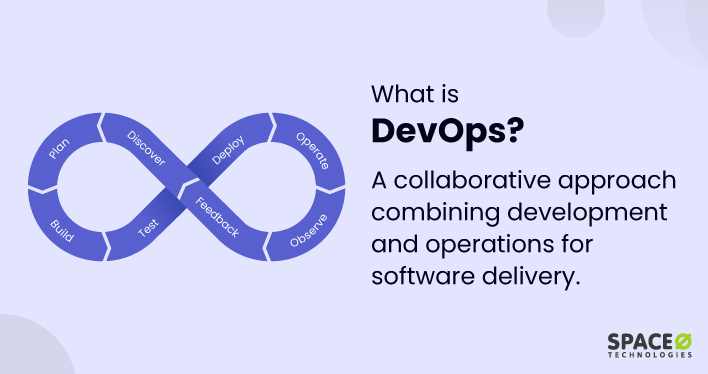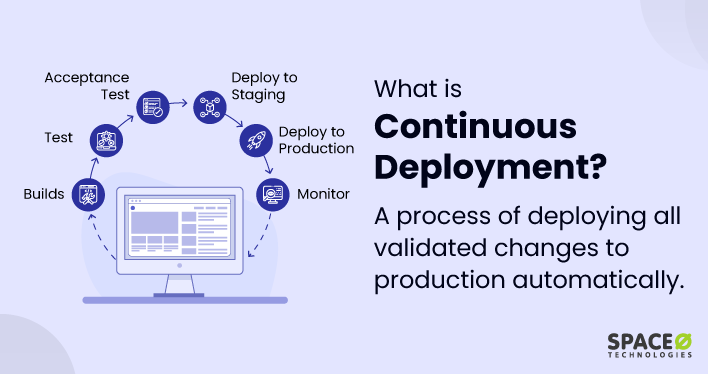Table of Contents
What is DevOps?
DevOps is a set of practices that combines software development (Dev) and IT operations (Ops). DevOps aim to shorten the systems development life cycle and provide continuous delivery with high software quality. It bridges the gap between the development teams and operations teams by promoting a collaborative approach to tasks and workflows, enabling faster, more reliable, and frequent deployments.
DevOps typically involves practices such as automation, continuous integration, continuous delivery, continuous testing, infrastructure as code, monitoring and logging, and incident response, among others. These practices are often supported by various tools and technologies, including Docker, Jenkins, Kubernetes, and Ansible.
If you are implementing DevOps practices, you might want to know about deploying web applications easily. For detailed insights, read this comprehensive guide about web app deployment. This help you understand deployment process, methods and tools.
The goal of the DevOps approach is to improve the speed, efficiency, and quality of the software development process, and delivery, enabling organizations to better serve their customers and compete more effectively in the market.
9 Benefits of Implementing DevOps in the Organization
Implementing DevOps practices in the development and operations of an organization can bring about numerous benefits across the software development process, lifecycle, and beyond. Here are some of the key advantages:
- Results in Faster Delivery Time: With continuous integration and continuous delivery, the software can be developed, tested, and deployed much faster and more frequently. This allows organizations to bring new features to market more quickly and respond to changing customer needs more effectively.
- Improves Collaboration and Communication: DevOps encourages a culture of shared responsibility and collaboration between development and operations teams. This can lead to greater efficiency, fewer misunderstandings, and better end products.
- Increases Efficiency: Automation is a key aspect of DevOps, helping to reduce repetitive manual tasks, streamline processes, and increase the speed and consistency of tasks such as testing and deployments.
- Leads to Higher Quality Products: With practices such as continuous testing and monitoring, problems can be detected and corrected earlier and more easily, leading to higher-quality software and improved customer satisfaction.
- Reduces Risk: Continuous integration and delivery practices mean that changes are smaller and more manageable, reducing the risk of major problems. Also, with continuous monitoring and logging, potential issues can be identified and mitigated quickly, minimizing the risk of downtime or security breaches.
- Increases Customer Satisfaction: By enabling faster delivery of high-quality software that meets customer needs, DevOps can lead to increased customer satisfaction.
- Results in Cost Efficiency: DevOps practices can lead to better resource management and reduced costs of development and infrastructure, thanks to automated processes and faster resolution of issues.
- Provides Better Problem Solving: The cultural shift that accompanies DevOps encourages open communication and transparency, leading to better problem-solving and innovative solutions.
- Increases Resilience: With DevOps, the system’s resilience increases due to the effective use of infrastructure as code and automated, repeatable processes, minimizing human error.
How Does DevOps Work?
DevOps is a set of practices that combines software development (Dev) and IT operations (Ops). It aims to shorten the system development process and operations life cycle and provide continuous delivery with high software quality.
To understand how DevOps works, it’s useful to visualize it as a cycle or a pipeline.

Here is a brief explanation of all the key stages:
- Plan: This is where the team defines the system requirements and identifies the necessary tasks.
- Code: Developers write and review the code.
- Build: The code is compiled and turned into an executable file.
- Test: The software is tested to ensure it meets the requirements and doesn’t contain bugs.
- Release: The software is prepared for release to a production environment.
- Deploy: The software is deployed to the production environment.
- Operate: The software is monitored in the production environment to ensure it’s working as expected.
- Monitor: The team collects data on the software’s performance and any problems that arise.
- Feedback and Improve: The team uses the data collected to make improvements in the next cycle.
Which are the Principles of DevOps?
DevOps principles guide how organizations can best adopt the practices, software development process, and mindset that underpin this approach. Here are some key DevOps principles:
- Continuous Integration and Continuous Delivery (CI/CD): These are cornerstone practices in DevOps. Continuous integration involves regularly merging code changes into a central repository, followed by automated building and testing. Continuous delivery takes this a step further by ensuring that the software is always in a deployable state.
- Automation: Automating as many processes as possible is a key principle of DevOps. This includes test automation, deployment automation, and infrastructure automation, among others. Automation not only increases efficiency and speed but also reduces the risk of human error.
- Collaboration: One of the main principles of DevOps is fostering a culture of collaboration between the development and operations teams. The goal is to break down the silos that typically exist between these groups and promote shared responsibility for the product’s success.
- Infrastructure as Code (IaC): This is a practice where the infrastructure is managed and provisioned through code, just like any other software. This enables automation, consistency, and repeatability of the infrastructure, leading to more reliable and efficient deployments.
- Monitoring and Logging: Continuous monitoring and logging of applications and infrastructure help teams quickly detect and resolve issues. This also provides valuable insights for improving future developments and operations.
- Feedback and Iterative Improvement: The DevOps approach encourages feedback at all stages of the delivery pipeline. Continuous feedback and learning are essential for identifying areas of improvement and implementing changes iteratively.
- Resilience: In a DevOps environment, systems are designed to be resilient to failures. This is achieved by practices like chaos engineering (deliberately introducing failures to test the system’s resilience) and designing for redundancy and failover.
- Shared Ownership: In a DevOps culture, everyone is responsible for the delivery and quality of the end product. This includes shared responsibility for maintaining the production environment and addressing issues.
- Customer-centric Action: DevOps encourages teams to always keep the end user in mind. The focus is on delivering value to the customer through high-quality software and rapid response to changing needs and feedback.
These principles serve as the foundation of the DevOps approach to agile development, shaping the practices development processes, tools, and culture that make it effective.
In conclusion, the DevOps approach is an influential set of practices that merges software development and IT operations, aiming to streamline and enhance the process of delivering high-quality software. It not only boosts efficiency and reduces risk but also fosters a culture of collaboration and shared responsibility. By embracing DevOps principles, organizations can accelerate their software development and delivery, enhance product quality, and ultimately provide superior value to their customers.







